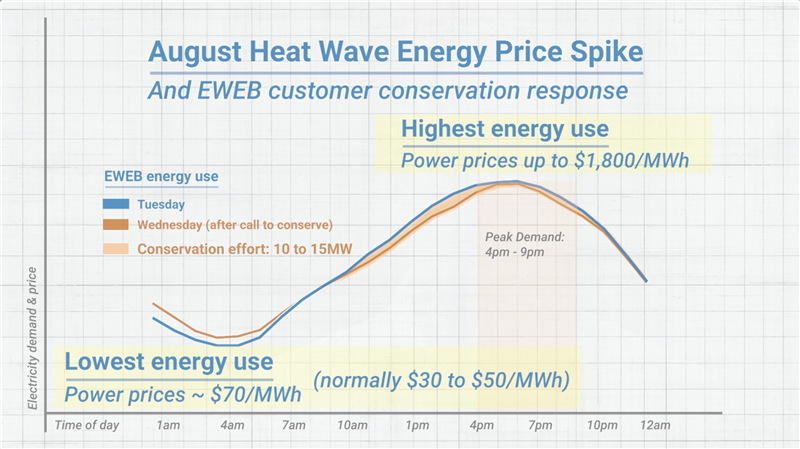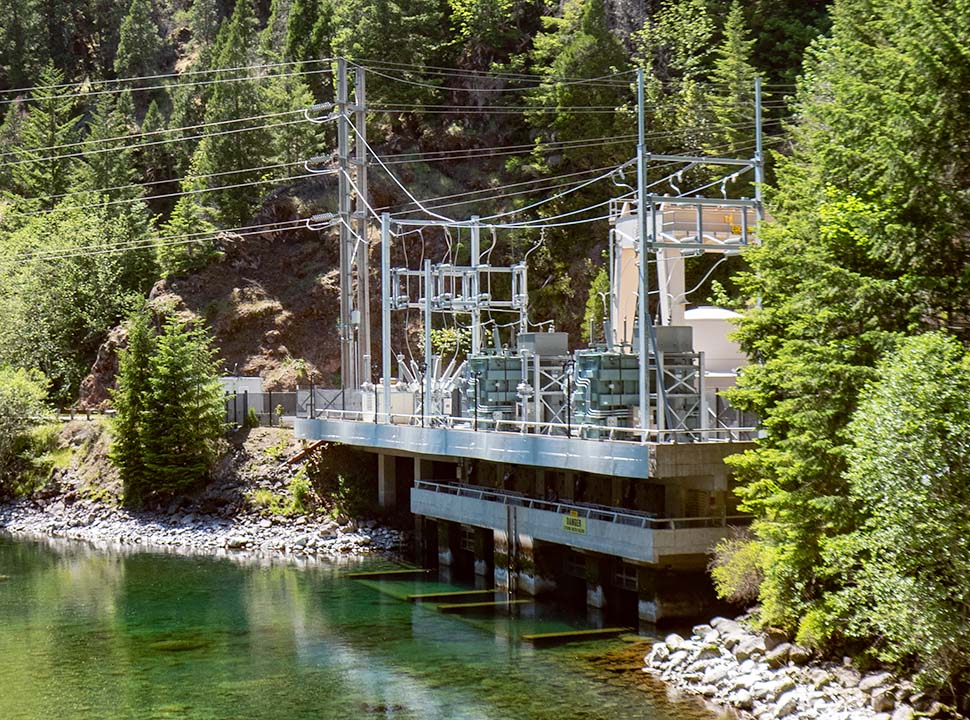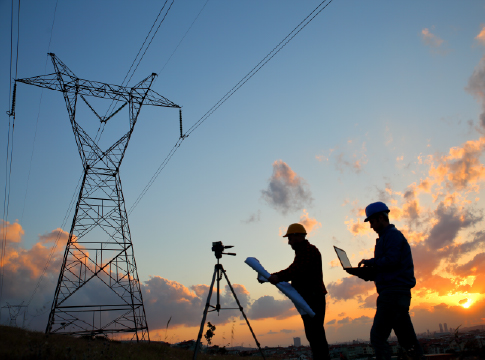Related News
Related News
-
2024 Public Power Week Poster Contest
To celebrate Public Power Week, EWEB is held our annual poster contest for fifth graders in our service area. Help us choose the winners.
Find Out More -
Smart meters make UO move-in easier
Automatic move-in service order processing makes signing up for electric service easy for UO students and the entire Eugene community, while keeping utility vehicles off the road and lowering carbon emissions.
Find Out More -
EWEB customers achieve remarkable results in environmental stewardship through EWEB's Lead Green programs
Subscribers of EWEB's Lead Green programs helped reduce carbon emissions in 2023 by 730 metric tons of CO2e.
Find Out More -
EWEB prepares to re-energize the new Currin Substation
The rebuilt substation will increase load capacity, improve power reliability, and incorporate seismic resiliency to ensure service to our community for generations.
Find Out More -
EWEB, SUB and RWD join forces at Lane County Fair to distribute water to fairgoers
The Eugene Water & Electric Board, Springfield Utility Board and Rainbow Water District are teaming up for the 9th year to provide fairgoers with clean, cold free water.
Find Out More -
Demand for EWEB electricity during heatwave nearly broke all-time summer record
Climate-driven weather extremes, home electrification, high-tech manufacturing and data centers will cause electricity demand to surge across the Pacific Northwest.
Find Out More -
EWEB explores rate increases to cover rising costs and to modernize infrastructure
Amid rising inflation and other challenges, rate increases are necessary to maintain reliable utility services and fund critical investments in Eugene’s water and electric infrastructure.
Find Out More -
EWEB prepares for rising energy demand as weekend heat wave arrives
Electricity supply is sufficient for now, but new supplies will be necessary in the years ahead to keep pace.
Find Out More -
EWEB preparing for expected surge in electric vehicles
Electric vehicle (EV) sales are poised to skyrocket in the years ahead as technology improves, more models hit the market, prices fall and regulations limit the sale of gas-powered vehicles. And EWEB is preparing for this surge.
Find Out More -
Community members can test out climate-friendly e-bikes at E-Bike Expo on Saturday
EWEB encourages Eugene residents to ride into summer on clean, accessible e-bikes, with a $300 e-bike rebate.
Find Out More -
EWEB invests in satellite-based forestry analytics for vegetation management
EWEB maintains over 1,300 miles of overhead transmission and distribution lines. To aid crews in identifying hazardous vegetation growth in a sometimes heavily forested service territory, EWEB is utilizing a new satellite-based forestry analytics software called Overstory.
Find Out More -
Tips to stay cool while saving money this summer
June is quickly approaching, and that means summer weather is just around the corner. Before you turn up the air conditioning and see an increase in your utility bill, try these tips to prepare your home for warmer weather to keep your home cool.
Find Out More -
EWEB offering additional energy efficiency supplement to qualified customers
Current EWEB residential electric customers may qualify to double their energy efficiency rebates with a limited time supplement.
Find Out More -
EWEB opens application for 2024 Electric Mobility Community Grants
Grant awards of up to $30,000 to cover costs associated with electric mobility projects.
Find Out More -
Upgrades to Eugene's downtown electric network continue
You may have noticed construction this week on the corner of 7th and Pearl Street. That’s because crews replaced a corroded, aging vault with an innovative, new Voltek vault. The Voltek design allows for the new infrastructure to be built inside of the existing aging vault. We’re able to install the new vault while the cables are still energized, minimizing disruption to customers and traffic while cutting construction time in half.
Find Out More - Show More
EWEB’s heat-driven call to conserve energy yields major savings
August 24, 2023 • Aaron Orlowski, EWEB Communications

By acting collectively and making small adjustments to temporarily reduce energy consumption, EWEB customers played a crucial role in maintaining grid stability during last week’s extreme heat wave.
Electricity was in short supply for several days last week as temperatures crested 100 degrees for four days in a row and several regional electricity generators were shut down due wildfire conditions, including EWEB’s Carmen-Smith hydroelectric project.
In response, EWEB issued its first-ever voluntary call for customers to safely conserve energy on Tuesday, Aug. 15, sending an email to 66,000 residential, commercial and industrial customers, and issuing an alert on social media.
Customers responded in force by raising the temperature settings on their air conditioners, charging electric vehicle overnight rather than in the evening, delaying running large appliances such as dryers or dishwashers until after 9 p.m. and turning off unnecessary lights and electronics.
By comparing customers’ hourly electricity demand on Monday, Tuesday and Wednesday, EWEB estimated that customers’ actions caused demand to be 10 to 15 megawatts lower than expected, given the temperatures and compounding heat effects. That’s roughly the equivalent of 10,000 to 15,000 window air conditioners getting shut off.
“The whole community came together in this time of duress to do something none of us could do on our own,” said EWEB Chief Energy Resources Officer Brian Booth. “The results show that if everyone makes a small individual effort, then we can have a huge collective impact.”
By paring back consumption, customers both reduced strain on the grid and contributed to keeping EWEB’s electric rates low by helping EWEB avoid paying exorbitant prices for electricity on the wholesale market. Power prices fluctuate by the hour, and customers’ actions allowed EWEB to skip purchasing some energy when prices were at their highest – ultimately saving EWEB customers money on rates in the long run.
On Tuesday and Wednesday, power prices ranged from $70 per megawatt-hour overnight, when demand was lowest, to as high as $1,800 per megawatt-hour from 5 to 8 p.m. when demand was highest. At the peak of the day, when prices were highest, reduced energy usage saved EWEB and customers approximately $10,000 per hour.
“As a publicly owned utility, every dollar we save is a dollar that our customer-owners ultimately don’t have to spend on rates. Instead, we’re able to keep rates low and continue to invest in community assets today that will keep us resilient tomorrow,” Booth said. “At the same time, when customers trim electricity demand when it’s at its highest, they reduce carbon emissions, since peak electricity tends to have higher carbon emissions.”
Call to conserve mirrors future demand response possibilities.
Future customer programs that EWEB will soon start assessing could look like last week’s call to conserve.
Electric utilities across the Northwest and the entire nation have instituted various “demand response” programs that incentivize customers to use less electricity when overall demand is at its highest.
Some programs connect the smart thermostats of customers who enroll to the utility’s systems, which can then cycle them on and off to reduce electricity consumption at peak times. Others similarly use smart electric vehicle chargers that the utility can cycle off during peak demand.
Still others use rates and pricing structures that incentivize customers to reduce their peak consumption on their own. Time-of-use rates, critical peak pricing and similar pricing schemes charge customers different amounts depending on when they use electricity. Others, such as peak-time rebates, compensate customers for scaling back consumption during peak periods.
All these programs largely depend on advanced metering infrastructure, or smart meters. EWEB has been rolling out smart meters to customers free of charge over the last several years, though supply chain disruptions in the last two years have slowed down deployment. So far, EWEB has deployed more than 68,000 electric smart meters, covering about 69% of customers.
Demand response programs also rely on modern back-end computer systems that better integrate information related to metering, energy supply, customer demand and billing. EWEB is currently undergoing a major technology upgrade to do just that.
“Demand response programs are one of the most promising methods we have to dynamically respond to wholesale electricity markets that are becoming more and more extreme and challenging,” Booth said. “As the Northwest adds more and more variable resources such as wind and solar to the grid, we need to better align demand with supply. Customers will play a key role in that.”
EWEB’s 2023 Integrated Resource Planning (IRP) process identified demand response programs as a key element of the utility’s future resource mix. The IRP forecasted electricity demand 20 years into the future and used modeling software to analyze dozens of resource options – such as wind, solar and hydropower – to create potential mixes of electricity sources that will reliably meet customers’ needs at the lowest price while being 95% carbon-free.
The analysis yielded valuable insights about the challenges EWEB faces in the future. EWEB doesn’t need to procure any resources in the next few years and will instead spend that time conducting additional analysis and preparing for the 2025 IRP.
One of those studies will look specifically at demand response. The study will seek to determine how much potential exists among EWEB customers for demand response programs, which ones are the best fit, how much they would cost to administer and what benefits would result. EWEB will also conduct a study on the potential to incentivize customers to conserve and consume less energy overall.
With climate change worsening, conditions like EWEB faced last week will only grow more common – and with that the need for flexible energy consumption.
“When evaluating customers’ response to last week’s request to conserve, I get excited about the value for participating customers if we had a formal demand response program,” Booth said. “If we could count on customers to provide that same response in the future when we experience extreme weather events, that same level of response represents many millions of dollars’ worth of battery storage, for example, that we potentially could avoid building.”
More Information
Here in Eugene, we are fortunate to have one of the cleanest power portfolios in the nation, with almost no electricity sourced from fossil fuels.
EWEB’s Integrated Resource Plan (IRP) will analyze possible energy resource portfolios with a goal of creating useful insights for long-term (20-year) electricity supply planning decisions.




